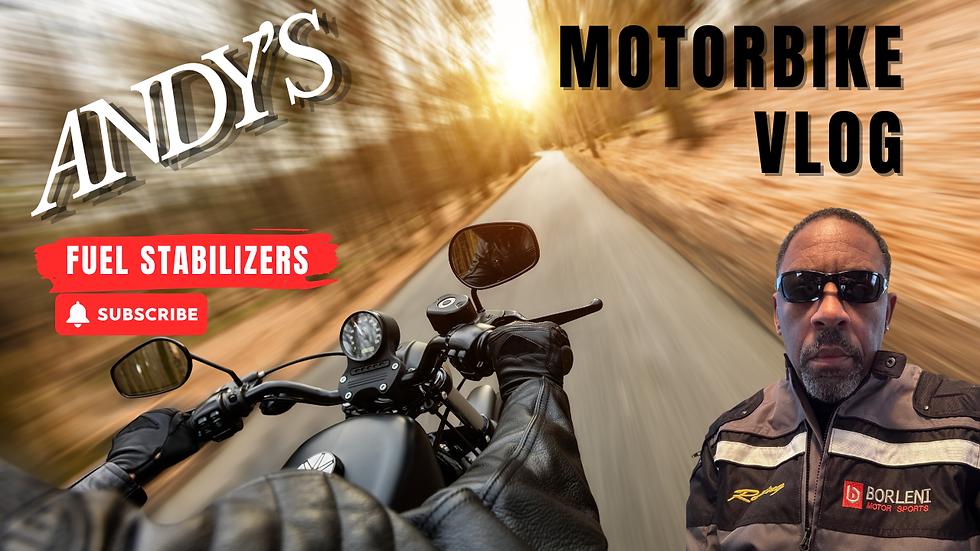Essential Guide to Cleaning and Greasing Your Motorcycle Chain Properly
- NMR

- 2 days ago
- 3 min read
Keeping your motorcycle chain clean and well-lubricated is one of the simplest yet most effective ways to extend the life of your bike and improve its performance. A dirty or dry chain can cause poor handling, increased wear, and even chain failure, which can be dangerous. This guide explains why cleaning and greasing your motorcycle chain matters and walks you through the best way to do it.

Why You Need to Clean and Grease Your Motorcycle Chain
Your motorcycle chain connects the engine to the rear wheel, transferring power to move the bike forward. Over time, dirt, dust, road grime, and old lubricant build up on the chain. This buildup causes friction and wear on the chain and sprockets, reducing efficiency and risking damage.
Cleaning removes harmful debris that can cause the chain to stretch or corrode. Greasing the chain afterward keeps it running smoothly, reduces friction, and protects against rust. Regular maintenance also helps you spot early signs of wear or damage, preventing costly repairs or accidents.
How Often Should You Clean and Grease Your Chain?
The frequency depends on your riding conditions:
Every 300-600 miles (500-1000 km) for normal road riding
More often after riding in rain, mud, or dusty environments
After long trips or if you notice the chain looks dirty or dry
Check your motorcycle’s manual for manufacturer recommendations. If you ride daily or in harsh conditions, weekly maintenance might be necessary.
What You Need for Chain Cleaning and Greasing
Gather these items before starting:
Motorcycle chain cleaner or kerosene (avoid harsh solvents that can damage O-rings)
Soft-bristle brush or old toothbrush
Clean rags or microfiber cloths
Chain lubricant (choose a product designed for motorcycle chains)
Gloves to protect your hands
A stand or center stand to lift the rear wheel for easy access
Step-by-Step Guide to Cleaning Your Motorcycle Chain
Prepare the bike
Place your motorcycle on a stand so the rear wheel can spin freely. This makes cleaning and lubricating easier.
Apply chain cleaner
Spray the chain cleaner generously on the entire length of the chain. Let it soak for a few minutes to loosen dirt and grime.
Scrub the chain
Use a soft-bristle brush to scrub the chain gently. Focus on the rollers, side plates, and sprockets. Avoid using wire brushes or anything abrasive that can damage the chain.
Wipe off dirt and cleaner
Use a clean rag to wipe away loosened dirt and excess cleaner. Rotate the wheel to access the full chain length.
Repeat if necessary
If the chain is still dirty, repeat the cleaning and scrubbing process until the chain looks clean.
Dry the chain
Wipe the chain thoroughly with a dry cloth to remove any remaining moisture.
How to Grease Your Motorcycle Chain Properly
Once the chain is clean and dry, it’s time to lubricate it:
Choose the right lubricant
Use a lubricant specifically made for motorcycle chains. These products are designed to stick to the chain and resist fling-off during riding.
Apply lubricant evenly
Spray or drip the lubricant on the inside of the chain while slowly rotating the rear wheel. Focus on the rollers and the spaces between the links where friction occurs.
Allow lubricant to set
Let the lubricant penetrate for at least 10-15 minutes before riding. This helps it soak into the chain and provide lasting protection.
Wipe off excess
Use a rag to remove any excess lubricant from the chain surface. Too much lubricant can attract dirt and grime quickly.
Tips for Maintaining Your Chain Between Cleanings
Check chain tension regularly and adjust it according to your motorcycle’s specifications.
Avoid using high-pressure water jets directly on the chain as they can wash away lubricant.
Inspect the chain for signs of rust, stiff links, or excessive wear.
If your chain has O-rings or X-rings, avoid harsh chemicals that can damage these seals.
Signs Your Chain Needs Attention
Squeaking or unusual noise while riding
Visible rust or corrosion
Stiff or seized links
Excessive slack or chain stretch
Poor acceleration or jerky movement
Addressing these issues early can save you from expensive repairs and keep your ride safe.
Thank you for reading this article. Please leave us a like a comment below. Your feedback helps us with content you want to see.





.png)



Comments